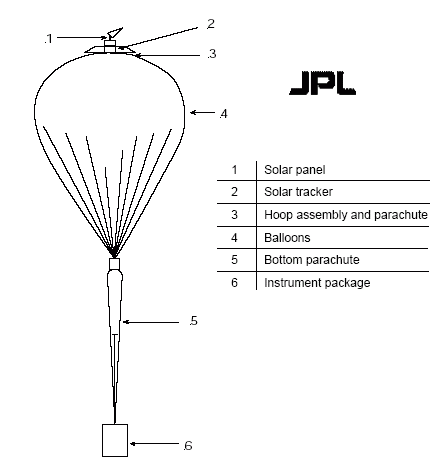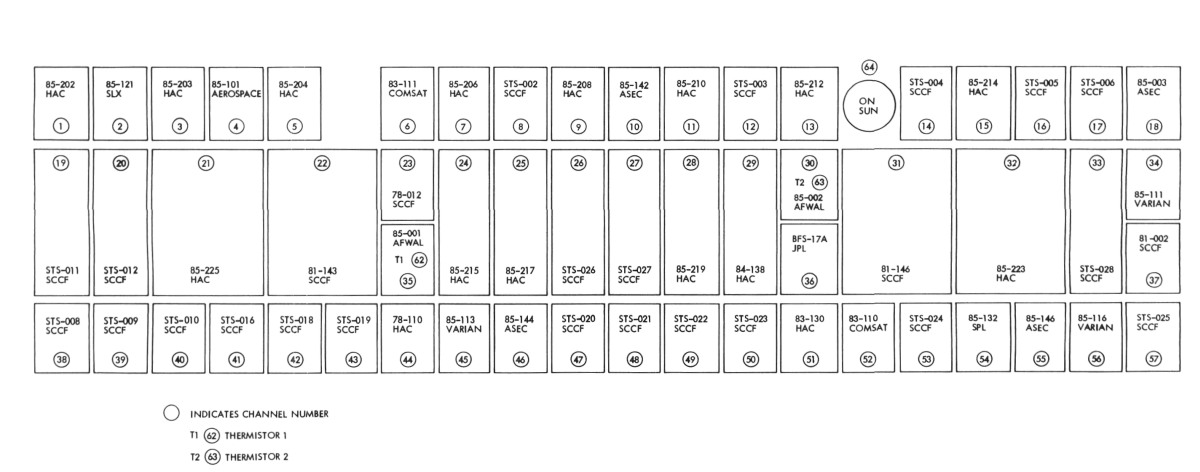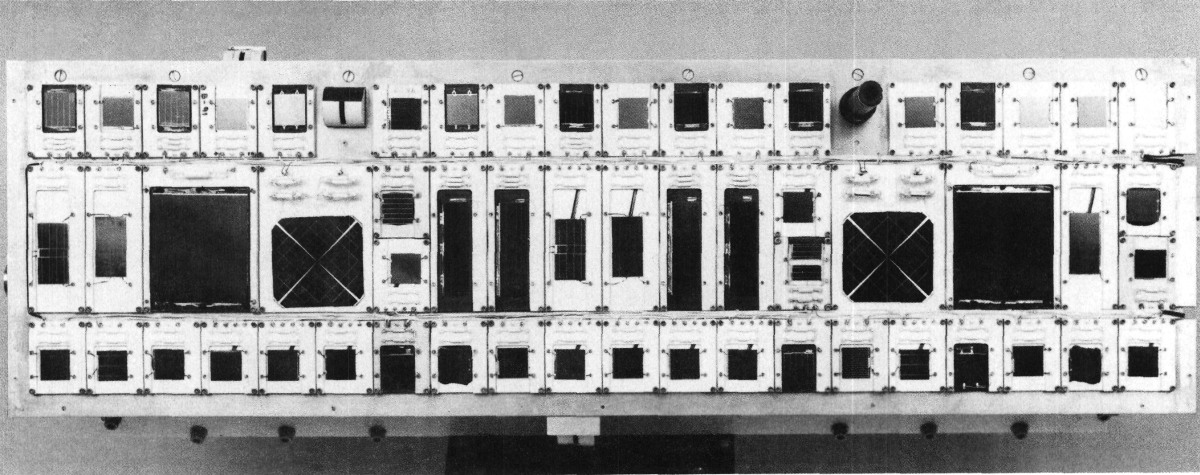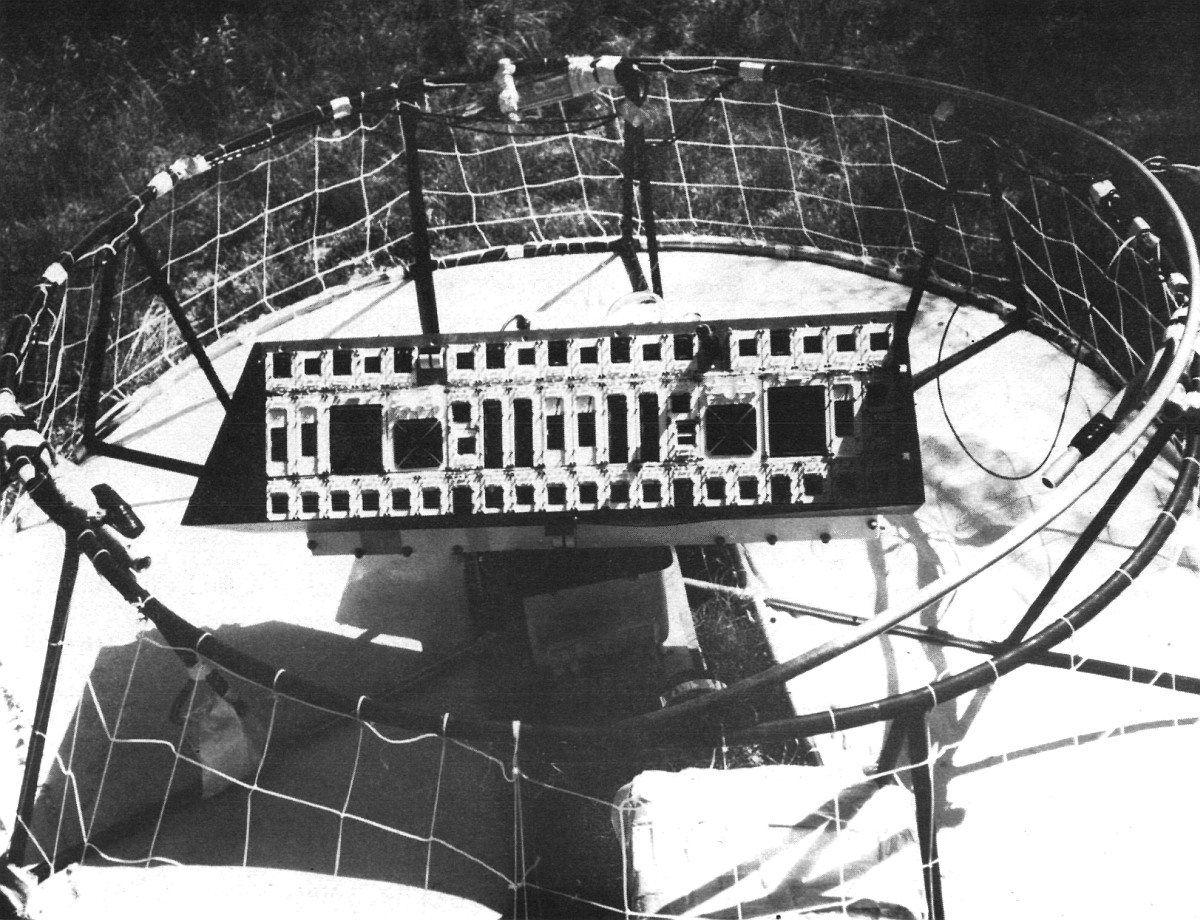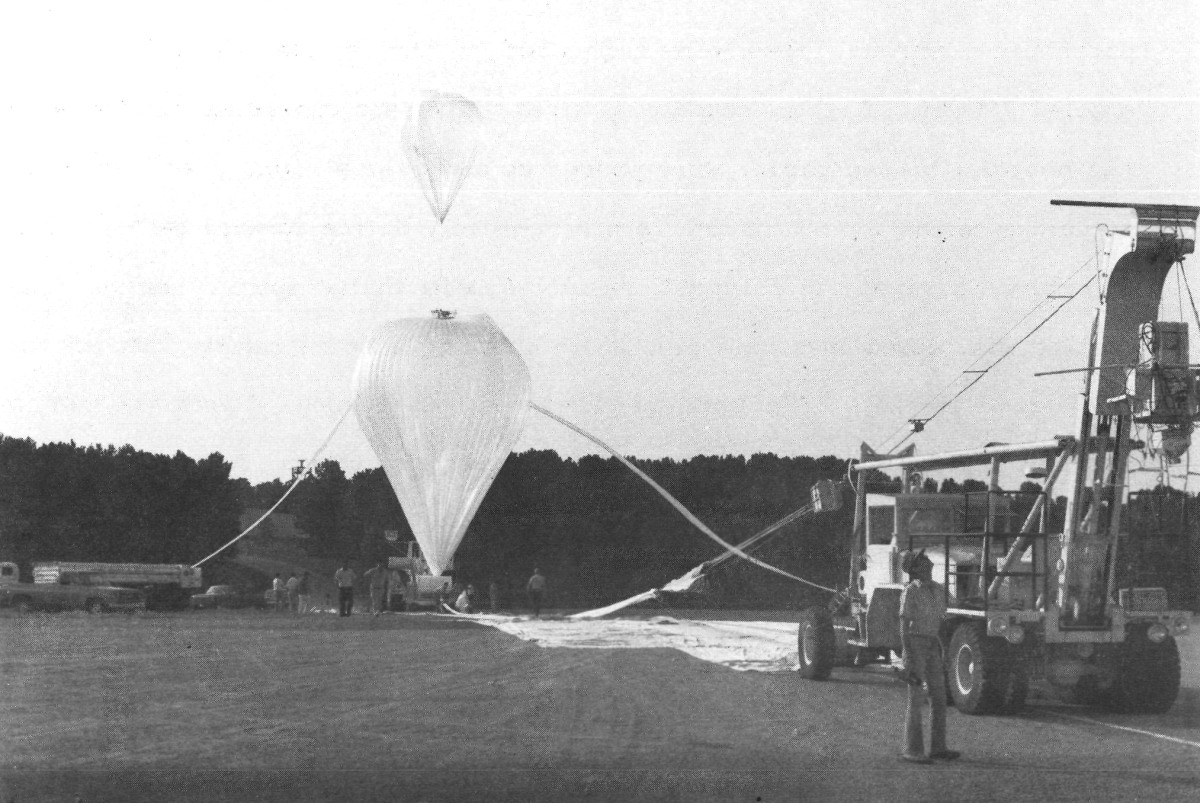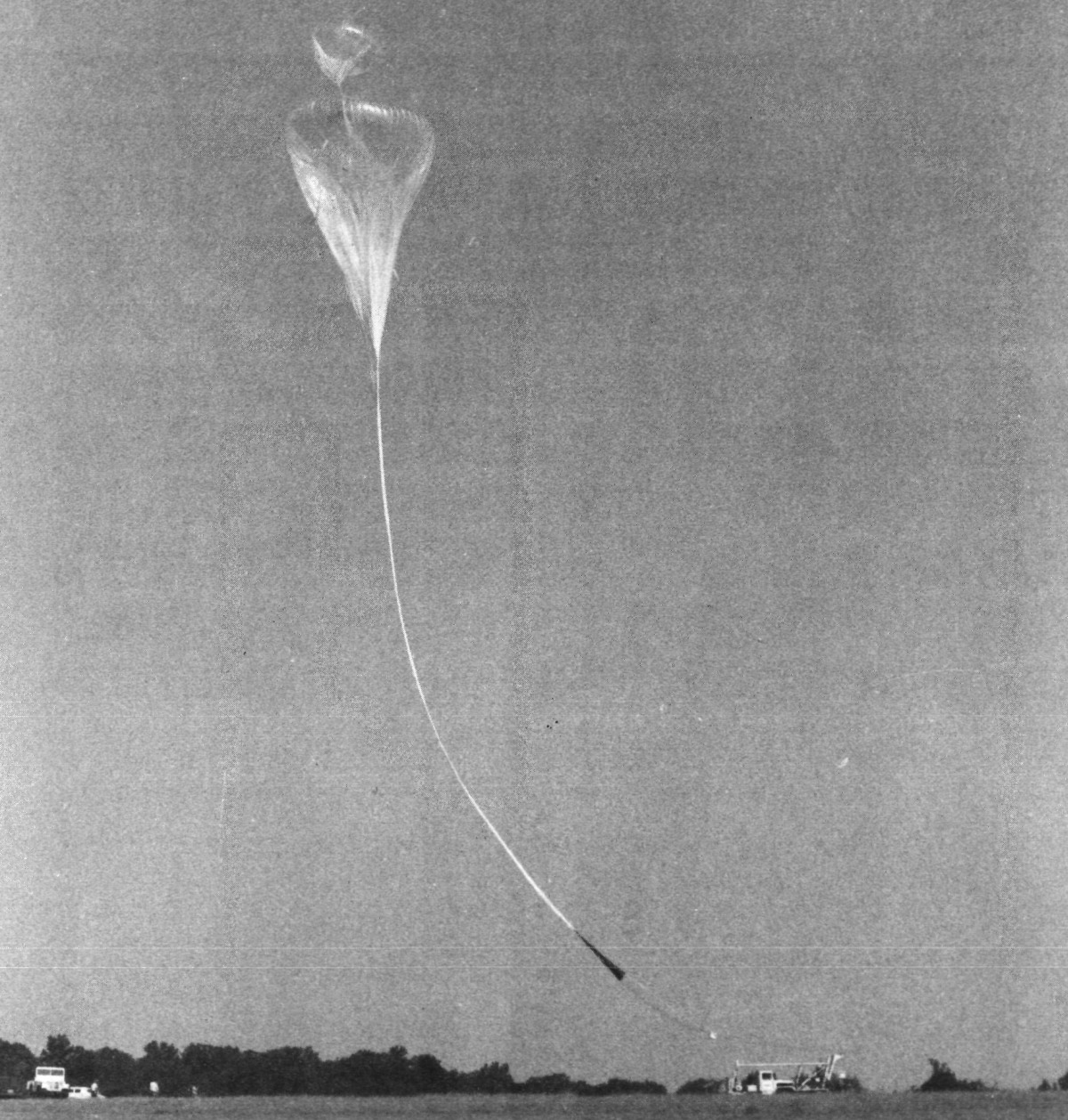Purpose of the flight and payload description
The purpose of the high altitude solar cell calibration program is to produce air mass zero (AM0) standard solar cell that can be used for accurately setting solar simulator intensities.
The concept is to fly the cells on a balloon, to measure their output at altitudes at or above 36 km (120 000 ft), to recover the cells and to use them as reference standards. The calibrated standard solar cell is placed in the solar simulator beam, and the beam intensity is adjusted until the standard solar cell reads the same as it read on the balloon.
The cells are exposed to direct extraterrestrial sunlight while they are carried on the high altitude balloon. A solar tracker is used to constantly align the solar cells normal to the Sun. The tracker assembly is mounted on the apex of the balloon in order to avoid reflections and/or shadowing from the balloon or from any part of the structure hanging below it.
The main components of the balloon flight system are shown in the drawing at left.
During the flight, the data is telemetered to the ground station. The solar cell calibration data is sent to a computer dedicated to the real-time display and storage of the solar cell data. Data is accumulated for at least 30 min within 1 hr of local solar noon. At the end of the flight, the solar tracker assembly is separated from the balloon system and allowed to descend by its own parachute.
Details of the balloon flight
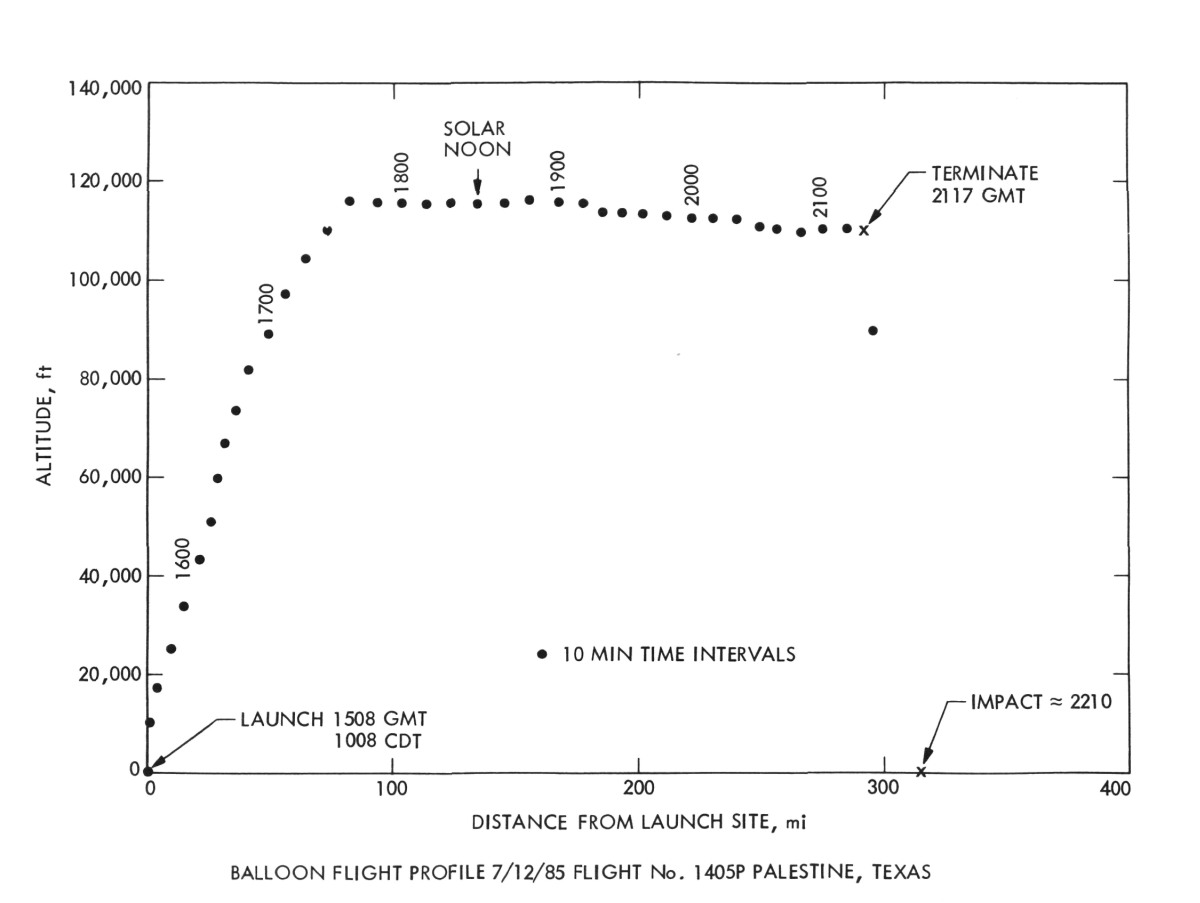
Balloon launched on: 7/12/1985 at 15:08 utc
Launch site: Columbia Scientific Balloon Facility, Palestine, Texas, US
Balloon launched by: National Scientific Balloon Facility (NSBF)
Balloon manufacturer/size/composition: Zero Pressure Balloon Raven 3.46 - 100.000 m3 - SF-185.58-070-NSHR-01
Balloon serial number: W2.261-0-02
Flight identification number: 1405P
End of flight (L for landing time, W for last contact, otherwise termination time): 7/12/1985 at 21:17 utc
Balloon flight duration (F: time at float only, otherwise total flight time in d:days / h:hours or m:minutes - ): 6 h 9 m
Landing site: 35 miles W of San Angelo, Texas, Us
Fifty-seven modules were carried to an altitude of 115,000 ft (35.0 km)
External references
- Results of the 1985 NASA/JPL balloon flight solar cell calibration program Technical Report - Jet Propulsion Lab., California Inst. of Tech.; Pasadena, CA, United States
- Solar cell calibration facility validation of balloon flight data: A comparison of shuttle and balloon flight results Technical Report NASA-CR-176528
5796If you consider this website interesting or useful, you can help me to keep it up and running with a small donation to cover the operational costs. Just the equivalent of the price of a cup of coffee helps a lot.

